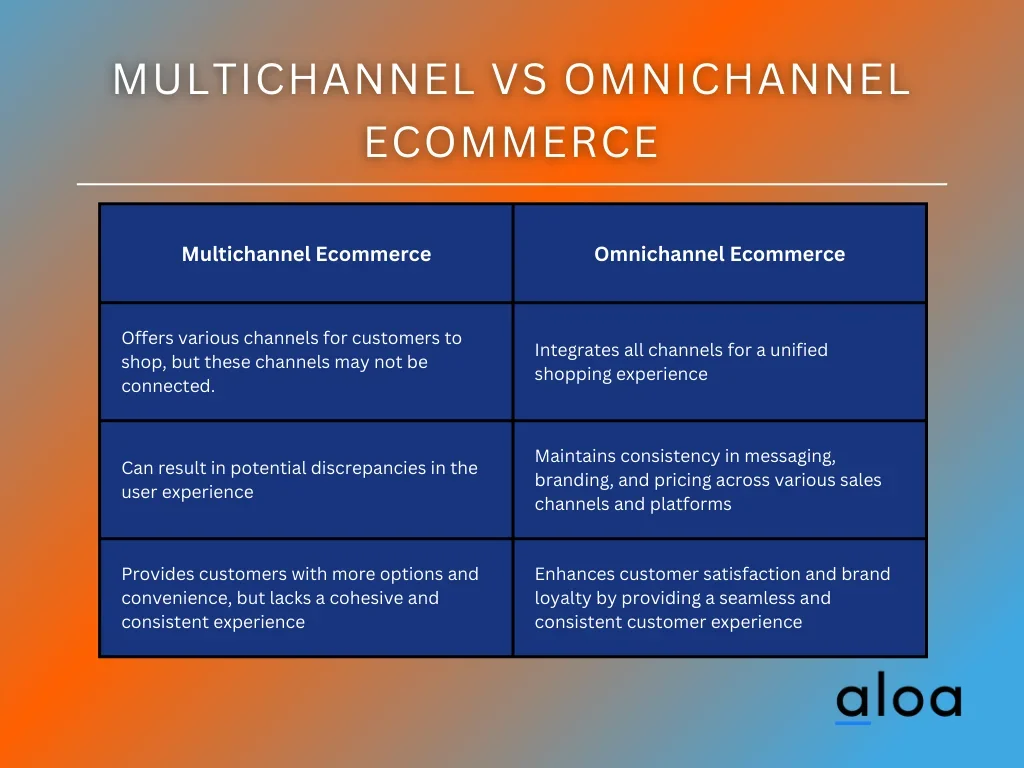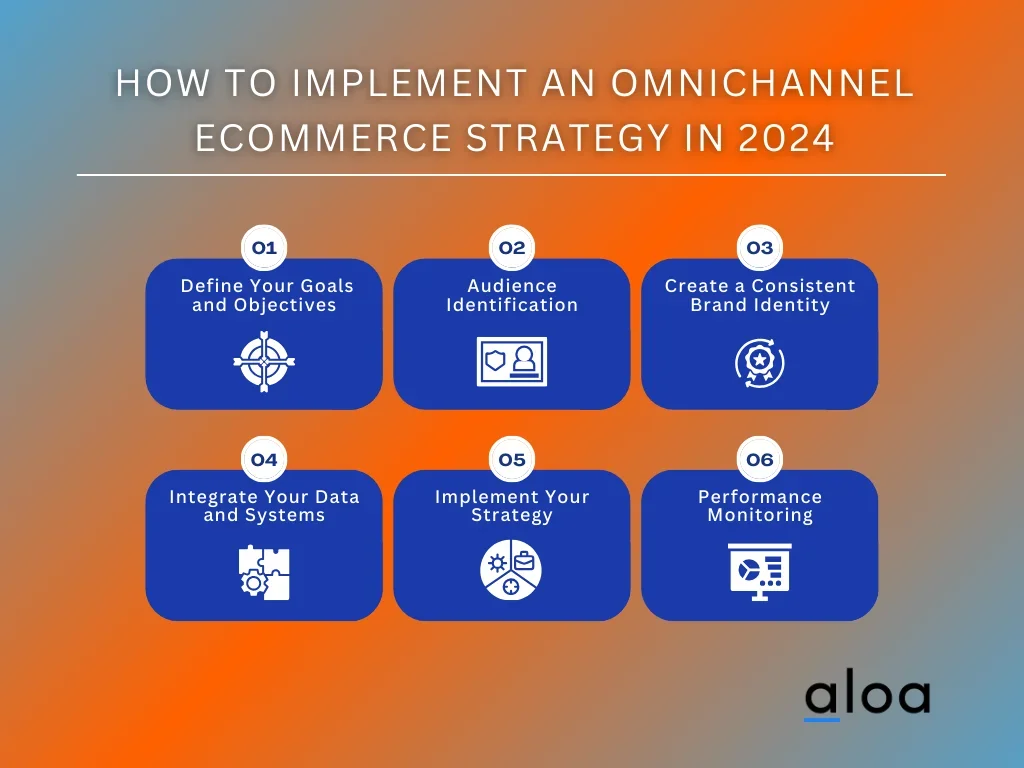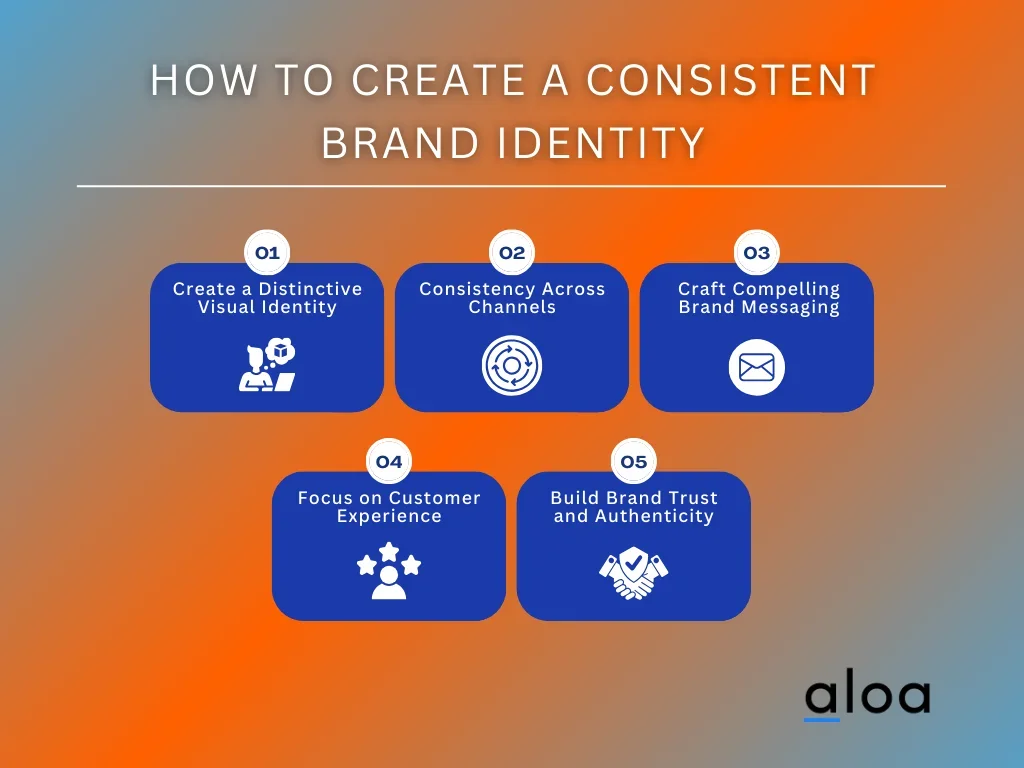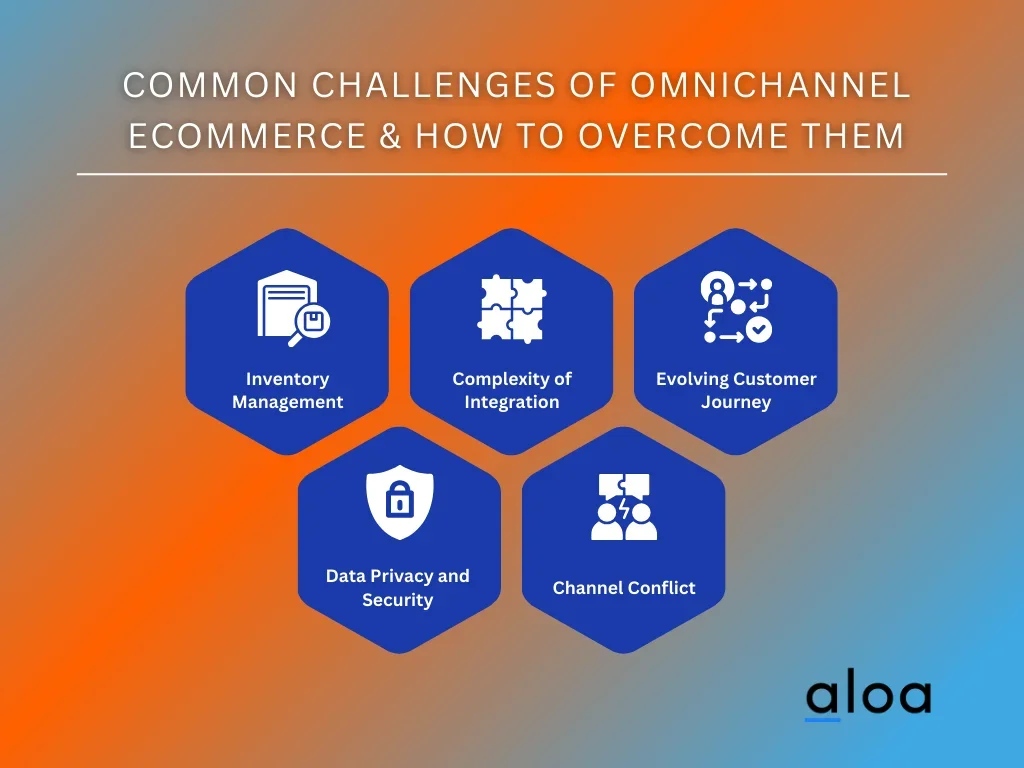Omnichannel ecommerce has become increasingly important in the retail industry. Nowadays, customers expect a seamless shopping experience, regardless of whether they're browsing online, visiting a physical store, or using a mobile app. With omnichannel strategies, retailers can meet customer expectations by providing a unified and consistent experience.
As a software development outsourcing company, Aloa has cultivated its expertise in the ecommerce industry through the clients we’ve worked with and the partner network of developers we’ve vetted. This experience allows our team to help businesses scale their operations using top-notch solutions that aim to improve overall business operations on a scalable level.
Based on our expert industry insights in product development, we've put together this comprehensive guide on omnichannel ecommerce to help you craft a winning omnichannel strategy. We’ll go through how to successfully implement such a strategy, the challenges businesses often face, and how to solve them efficiently. After reading, you'll gain an overview of applying this emerging strategy to meet and exceed customer expectations.
Let's get started!
What is Omnichannel Ecommerce?
Omnichannel ecommerce refers to the approach retailers take using an integrated strategy, providing online shoppers a seamless experience across multiple channels. These channels include online, mobile, and physical stores. In 2024, it has evolved into an essential strategy that aims to meet modern consumers' ever-changing demands and expectations.
Strategically, omnichannel ecommerce focuses on meeting the following elements:
- Channel Integration
- Technology Integrations
- Unified Customer Experiences
- Inventory Visibility and Fulfillment
- Insights for a Personalized Experience
Unlike multichannel ecommerce, which offers separate and independent channels, omnichannel ones connect all these channels to create a unified customer experience. Even if a retailer has a physical store, an omnichannel strategy allows customers to seamlessly transition between the physical store and online channels.
This integration ensures that customers can start their shopping journey on one channel and continue it on another without any disruptions or inconsistencies. Retailers who embrace an omnichannel approach provide a cohesive and convenient shopping experience for their customers, regardless of the channel they choose to engage with.
Let's look at the differences between an omnichannel and multichannel ecommerce approach.
Multichannel vs Omnichannel Ecommerce
At first glance, multichannel and omnichannel strategies in ecommerce sound familiar. However, there are several key differences between the two approaches. Identifying each helps businesses understand the advantages of implementing an omnichannel strategy.
Here’s a quick breakdown:

Keeping in mind these core differences, it's easy to see how an omnichannel ecommerce strategy aligns with what consumers need and expect in the modern age. Adopting omnichannel strategies helps businesses with these key benefits:
- Improved Customer Satisfaction: Customers have a seamless and consistent experience across all channels, leading to higher satisfaction.
- Consistent Customer Experience: Customers receive the same messaging, branding, and pricing across all customer touchpoints, creating a cohesive and memorable brand experience.
- Increased Customer Loyalty: An omnichannel approach fosters stronger customer connections, leading to repeat business and brand loyalty.
- Better Data Insights: Integrating data from all channels, businesses gain valuable insights into customer behavior and preferences. This allows for more effective marketing strategies and personalized interactions.
How to Implement an Omnichannel Ecommerce Strategy in 2024
Implementing an omnichannel ecommerce strategy in 2024 requires retailers to have a well-planned execution strategy. Such a strategy must help businesses meet customer expectations, drive sales, and build brand loyalty in competitive spaces.
Here are the key steps to follow in building this strategy:

Step 1: Define Your Goals and Objectives
Business strategies that apply omnichannel ecommerce initiatives are only as successful as their defined goals and objectives. So, before you start implementing your plan, it's ideal to lay out your business goals and objectives. As you go through this step in the process, consider the following highlights in defining this step:
- Increase Sales: Involves boosting revenue, average order value, or conversion rates.
- Enhance Customer Experiences: Focuses on providing seamless integration for consumers who use different channels to engage with an e-commerce platform.
- Expand Market Reach: Reach new customer segments and expand your market presence to launch a targeted marketing campaign that taps into emerging channels such as social commerce or voice commerce.
- Boost Customer Loyalty: Cultivates customer loyalty by offering exclusive promotions and personalized incentives across different channels.
- Drive Online Engagement: Involves increasing your brand visibility through content marketing, social media engagement, and providing interactive experiences.
Having these goals and objectives will help you narrow down how you'll implement your strategy and what key performance indicators you'll need to monitor and improve your online business.
Step 2: Identify and Understand Your Target Audience
After laying the foundations of your plan with the initial goals and objectives, it's time to start diving deeper into your target audiences. Identifying and understanding them goes beyond just knowing who they are. It also means looking into their shopping patterns, behaviors, and preferences.
Keep these points to streamline your research into understanding your target audience:
- Demographics: Includes target audience's ages, genders, locations, income levels, and occupations.
- Shopping Patterns: Pertains to how often customers make purchases, where they like to shop, the average order value, and their buying journey. All these contribute to how you'll plan out audience engagement.
- Consumer Behavior: This relates to how consumers establish brand loyalty, why they prefer certain products, and how they interact with marketing channels when searching for that product.
- Preferences: It signifies how your target audience expects to have their pain points addressed as they go through their shopping experience.
- Communication Channels: Uncovers the channels where customers receive product information, promotions, updates, and offers. Channels may include emails, social media platforms, SMS, or push notifications.
Compiling information on each aspect listed above will give you a deep insight into how your business can effectively reach and resonate with its desired audience. Additionally, considering each segment of your audience helps you align your business strategy with what they are after.
Step 3: Create a Consistent Brand Identity
Establishing your goals, objectives, and target audience research will lead you toward creating the perfect brand identity that resonates with your target audience. Remember that your brand identity needs to incorporate business goals with customer expectations.

While achieving such a goal may seem like a tall task, you can follow these tips in creating a solid and consistent brand experience:
- Create a Distinctive Visual Identity: A visually appealing brand identity includes reflecting your unique personality that should resonate with your audience.
- Consistency Across Channels: Brand element consistency across channels creates a cohesive image that fosters recognition and keeps your brand at the top choice.
- Craft Compelling Brand Messaging: Your brand message must communicate your value proposition, benefits, and USP using a language that resonates with your audience and conveys personality through tone and voice.
- Focus on Customer Experience: Placing exceptional delivery in customer experience ensures you align with what customers are after from the moment they encounter your brand to post-purchase interactions.
- Build Brand Trust and Authenticity: Brands can cultivate trust and authenticity through open communications. You can achieve this by showing integrity in all dealings.
These essential elements of your brand identity will personalize the shopper experience and carve out your unique selling proposition (USP) in highly competitive markets.
Having strong brand identities will ultimately drive growth and success in 2024.
Step 4: Integrate Your Data and Systems
Aggregating the information and research you've gathered in the previous steps streamlines your ability to integrate the data and systems you need to meet those points. You'll explore different solutions for your omnichannel marketing integration at this stage. These solutions can be custom-made or market-available.

Here's a quick guide to integrating your data and systems for omnichannel ecommerce:
- Assess Your Needs: Review the current data and systems and identify gaps, redundancies, and inefficiencies that should be addressed through integration.
- Define Integration Requirements: Define your integration requirements based on your business objectives, customer expectations, and operational needs.
- Evaluate Integration Solutions: Explore different integration solutions available in the market, including pre-built integration platforms, middleware solutions, and custom development options.
- Consider Custom Development: If off-the-shelf solutions do not fully meet your requirements, look into custom development solutions. Work closely with your outsourced software development partner to define project scope, timelines, and deliverables. With that, you can ensure they align with your budget and goals.
- Test and Validate: Thoroughly test and validate the integrated systems to ensure seamless data flow, accurate synchronization, and optimal channel performance.
Generally, custom-made ecommerce solutions for omnichannel require you to work with a software development partner. Market-available options, on the other hand, have a quicker integration timeline and often require less management oversight from your end. Careful planning and collaboration are essential to opt for a custom or market-available solution.
Step 5: Implement Your Strategy
Once your omnichannel ecommerce solution has been developed and your data and systems are integrated, you can formally implement your strategy. Implementing your strategy requires that you have a clear roadmap for execution. Remember, successful implementation is not just about technology but also about people and processes working together seamlessly.
Throughout the implementation process, it's crucial to maintain open communication with your software development partner or solution provider. As you move forward with executing your omnichannel strategy, agility and adaptability will be key in responding to any unforeseen challenges or opportunities that may arise. Stay focused on delivering customers a seamless, personalized shopping experience across all channels.
Step 6: Continually Monitor and Analyze Performance
After formal implementation, it's still essential to continually monitor and analyze the performance of your omnichannel solution on the overall retail experience your customer has.
While there are several things to consider in providing a cohesive customer experience, here are the general aspects to keep an eye on as you evaluate the omnichannel customer experience.
- Monitor and Optimize: Establish monitoring mechanisms and key performance indicators (KPIs) to track the effectiveness of the integrated systems and identify areas for optimization. Continuously gather feedback from users and stakeholders to iterate and improve the integration over time.
- Maximize ROI: Set measurable targets for achieving a positive return on investment (ROI) from your omnichannel initiatives. This involves tracking key financial metrics such as revenue growth, profit margins, customer acquisition cost, and lifetime value.
- Improve Operational Efficiency: Streamline internal processes and operations to support omnichannel fulfillment, inventory management, and customer service. Set goals for reducing order processing times, minimizing stockouts, and optimizing supply chain logistics.
Following these steps towards a seamless and integrated solution enables businesses to optimize their omnichannel strategy and deliver a top-notch customer experience. This proactive approach ensures operational efficiency and maximizes ROI by setting measurable targets for financial success.
Common Challenges of Omnichannel Ecommerce and How to Overcome Them
Implementing an omnichannel ecommerce strategy comes with its fair share of challenges. However, with careful planning and the right tools and strategies, businesses can overcome these challenges and create a seamless and cohesive omnichannel experience. Some of these common challenges include:

Inventory Management
Managing inventory across multiple channels while minimizing stockouts and overstocks is a significant challenge in omnichannel retail. Real-time visibility into inventory levels, accurate demand forecasting, and efficient order fulfillment are critical for meeting customer expectations.
Solution:
- Implement inventory management systems that provide real-time visibility into inventory levels across all channels.
- Use demand forecasting algorithms and predictive analytics to anticipate demand and optimize inventory allocation.
- Adopt advanced fulfillment strategies such as ship-from-store and store pickup to maximize inventory utilization.
Complexity of Integration
Integrating multiple channels, systems, and technologies can be complex and challenging. Disparate systems may not communicate effectively, leading to data silos and inconsistencies in inventory management, order fulfillment, and customer experience.
Solution:
- Invest in robust omnichannel commerce platforms or middleware solutions that centralize data and streamline channel integration.
- Prioritize interoperability and compatibility when selecting technology solutions, and consider leveraging APIs for seamless data exchange between systems.
Evolving Customer Journey
The omnichannel customer journey is often nonlinear and complex, with customers switching between online and offline channels throughout the purchasing process. Providing a seamless and cohesive experience across these channels requires careful orchestration and coordination.
Solution:
- Map out the customer journey across all touchpoints and channels to identify pain points and opportunities for improvement.
- Implement omnichannel customer relationship management (CRM) systems to track customer interactions and preferences across channels.
- Offer consistent branding, messaging, and promotions across all touchpoints to create a cohesive experience.
Data Privacy and Security
Collecting and managing customer data across multiple channels raises data privacy and security concerns. Mishandling sensitive customer information can damage trust and result in regulatory fines and legal repercussions.
Solution:
- Implement robust data privacy and security measures to protect customer data from unauthorized access, breaches, and misuse.
- Comply with data protection regulations such as GDPR and CCPA and obtain explicit customer consent before collecting and using their personal information.
- Invest in encryption, firewalls, and intrusion detection systems to safeguard data against cyber threats.
Channel Conflict
Channel conflict can arise when online and offline channels compete for sales or cannibalize each other's revenue. Retailers must balance promoting online sales and supporting the brick-and-mortar business without alienating customers or undermining channel partnerships.
Solution:
- Implement channel-specific pricing and promotions to differentiate online and offline offerings and incentivize customers to shop through preferred channels.
- Offer exclusive in-store experiences or services that cannot be replicated online to drive foot traffic and enhance the value proposition of physical stores.
- Collaborate with channel partners to align goals and incentives and mitigate conflicts.
Key Takeaway
Applying an omnichannel ecommerce strategy that seamlessly integrates all touchpoints can enhance customer experience and drive sales. Considering the key benefits of such a strategy also enables businesses in the e-commerce space to stay ahead of the competition as they navigate the evolving retail landscape.
Today's consumers expect the brands they engage with to be present on their channels and platforms. With an omnichannel approach exclusive to ecommerce modern retailers, potential customers can easily find and purchase from your store, thereby generating more profit.
Ready to implement your very own omnichannel ecommerce solution? Reach out to our account executive at [email protected] to explore a full list of pre-vetted custom software developers with whom you can partner with. You can also explore the ecommerce trends and insights via the Aloa blog to stay updated on the latest industry developments!

